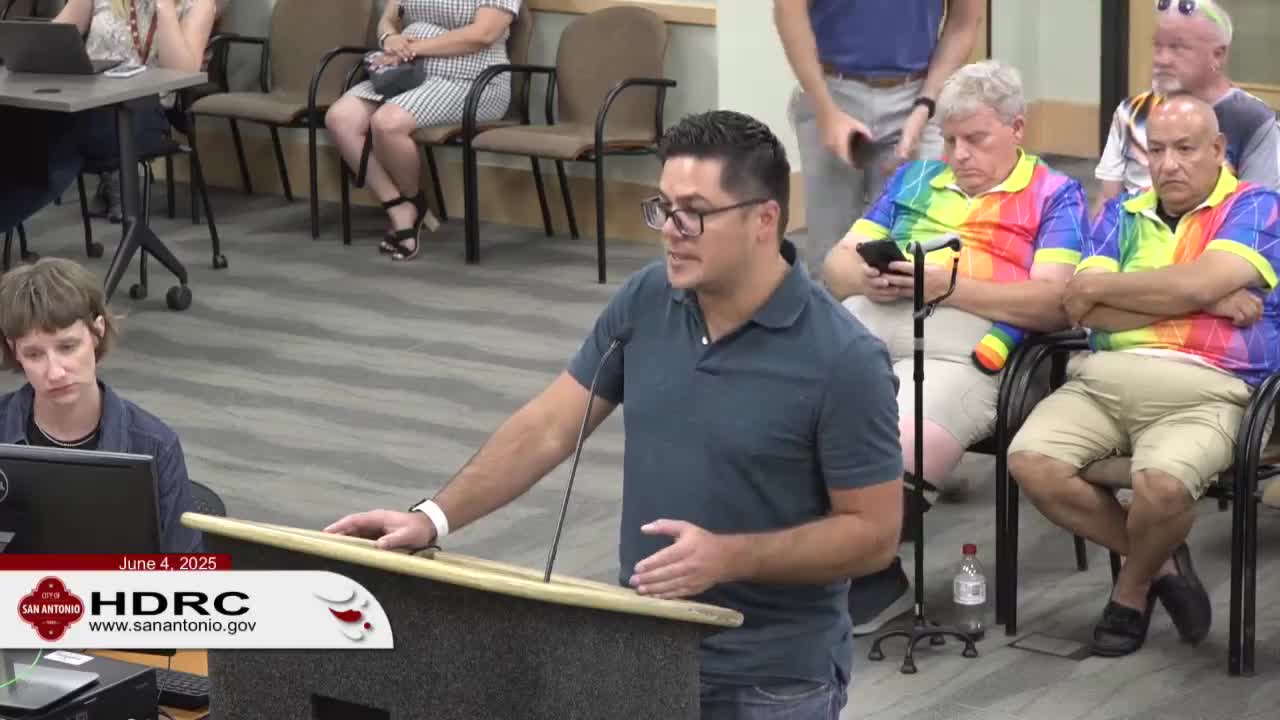HDRC approves Cedar Street project with stipulations on landscaping and construction details
June 04, 2025 | San Antonio, Bexar County, Texas
This article was created by AI summarizing key points discussed. AI makes mistakes, so for full details and context, please refer to the video of the full meeting. Please report any errors so we can fix them. Report an error »

In the heart of San Antonio's historic district, the Historic and Design Review Commission (HDRC) convened on June 4, 2025, to deliberate on a series of significant architectural proposals that could reshape the neighborhood's landscape. The meeting unfolded with a focus on a project at 303 Cedar Street, where the applicant sought approval for various renovations, including the removal of an existing rear structure and the construction of a new accessory building.
The discussion began with a report on an archaeological dig conducted at the site, which yielded no historical artifacts or concerns. This finding set a positive tone for the project, as the new structure is designed to face away from residential areas, aligning with community zoning regulations. The applicant, architect Cameron Smith, expressed a willingness to address neighborhood concerns, particularly those raised by the King William Association.
As the meeting progressed, the commission reviewed the proposal's details, which included plans for decorative iron guardrails, a new patio, and landscaping enhancements. Staff recommendations emphasized the importance of preserving existing materials and ensuring that all construction adhered to historical guidelines. Notably, the commission discussed the contentious issue of raised steel planters, which had previously been deemed inappropriate in similar cases. After engaging with the community, Smith confirmed that the raised planters would be removed from the design, opting instead for drought-resistant plants to enhance the yard's aesthetic.
The commission ultimately voted to continue the case, allowing further discussions with the neighborhood association. While some members expressed a desire to move forward without additional meetings, the majority supported the motion, highlighting the importance of community engagement in preserving the historic character of the area.
As the meeting concluded, the HDRC underscored its commitment to balancing development with the preservation of San Antonio's rich architectural heritage. The outcome of this case will not only impact the immediate neighborhood but also set a precedent for future projects in the historic district, reflecting the ongoing dialogue between progress and preservation in this vibrant city.
The discussion began with a report on an archaeological dig conducted at the site, which yielded no historical artifacts or concerns. This finding set a positive tone for the project, as the new structure is designed to face away from residential areas, aligning with community zoning regulations. The applicant, architect Cameron Smith, expressed a willingness to address neighborhood concerns, particularly those raised by the King William Association.
As the meeting progressed, the commission reviewed the proposal's details, which included plans for decorative iron guardrails, a new patio, and landscaping enhancements. Staff recommendations emphasized the importance of preserving existing materials and ensuring that all construction adhered to historical guidelines. Notably, the commission discussed the contentious issue of raised steel planters, which had previously been deemed inappropriate in similar cases. After engaging with the community, Smith confirmed that the raised planters would be removed from the design, opting instead for drought-resistant plants to enhance the yard's aesthetic.
The commission ultimately voted to continue the case, allowing further discussions with the neighborhood association. While some members expressed a desire to move forward without additional meetings, the majority supported the motion, highlighting the importance of community engagement in preserving the historic character of the area.
As the meeting concluded, the HDRC underscored its commitment to balancing development with the preservation of San Antonio's rich architectural heritage. The outcome of this case will not only impact the immediate neighborhood but also set a precedent for future projects in the historic district, reflecting the ongoing dialogue between progress and preservation in this vibrant city.
View full meeting
This article is based on a recent meeting—watch the full video and explore the complete transcript for deeper insights into the discussion.
View full meeting
